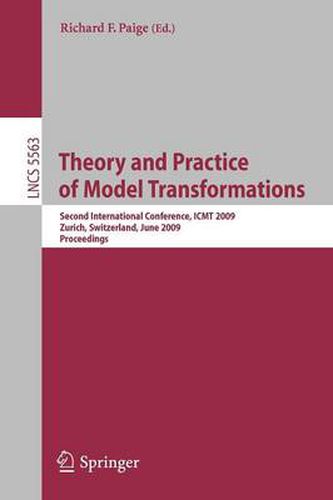Readings Newsletter
Become a Readings Member to make your shopping experience even easier.
Sign in or sign up for free!
You’re not far away from qualifying for FREE standard shipping within Australia
You’ve qualified for FREE standard shipping within Australia
The cart is loading…






This title is printed to order. This book may have been self-published. If so, we cannot guarantee the quality of the content. In the main most books will have gone through the editing process however some may not. We therefore suggest that you be aware of this before ordering this book. If in doubt check either the author or publisher’s details as we are unable to accept any returns unless they are faulty. Please contact us if you have any questions.
Models have become essential for supporting the development, analysis and e- lution of large-scale and complex IT systems. Models allow di?erent views, p- spectives and elements of a system to be captured rigorously and precisely, thus allowing automated tools to manipulate and manage the models. In a full-?edged model-driven engineering (MDE) process, the transformations developed and - pressed between models are also key. Model transformations allow the de?nition and implementation of the operations on models, and also provide a chain that enables the automated development of a system from its corresponding m- els. Model transformations are already an integral part of any model-driven approach, and there are a number of available model transformation languages, tools, and supporting environments; some of these approaches are now approa- ing maturity. Nevertheless, much work remains: the research community and industry need to better understand the foundations and implications of model transformations, such as the key concepts and operators supporting transfor- tion languages, their semantics, and their structuring mechanisms and properties (e. g. , modularity, composability and parametrization). The e?ect of using model transformations on organizations and development processes - particularly when applied to ultra-large scale systems, or in distributed enterprises - is still not clear. These issues, and others related to the speci?cation, design, implemen- tion, analysis and experimentation with model transformation, are the focus of these proceedings. The Second International Conference on Model Transformation (ICMT 2009) was held in late June 2009 in Zurich, Switzerland.
$9.00 standard shipping within Australia
FREE standard shipping within Australia for orders over $100.00
Express & International shipping calculated at checkout
This title is printed to order. This book may have been self-published. If so, we cannot guarantee the quality of the content. In the main most books will have gone through the editing process however some may not. We therefore suggest that you be aware of this before ordering this book. If in doubt check either the author or publisher’s details as we are unable to accept any returns unless they are faulty. Please contact us if you have any questions.
Models have become essential for supporting the development, analysis and e- lution of large-scale and complex IT systems. Models allow di?erent views, p- spectives and elements of a system to be captured rigorously and precisely, thus allowing automated tools to manipulate and manage the models. In a full-?edged model-driven engineering (MDE) process, the transformations developed and - pressed between models are also key. Model transformations allow the de?nition and implementation of the operations on models, and also provide a chain that enables the automated development of a system from its corresponding m- els. Model transformations are already an integral part of any model-driven approach, and there are a number of available model transformation languages, tools, and supporting environments; some of these approaches are now approa- ing maturity. Nevertheless, much work remains: the research community and industry need to better understand the foundations and implications of model transformations, such as the key concepts and operators supporting transfor- tion languages, their semantics, and their structuring mechanisms and properties (e. g. , modularity, composability and parametrization). The e?ect of using model transformations on organizations and development processes - particularly when applied to ultra-large scale systems, or in distributed enterprises - is still not clear. These issues, and others related to the speci?cation, design, implemen- tion, analysis and experimentation with model transformation, are the focus of these proceedings. The Second International Conference on Model Transformation (ICMT 2009) was held in late June 2009 in Zurich, Switzerland.